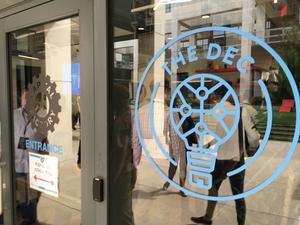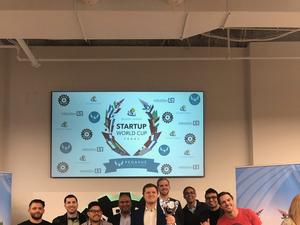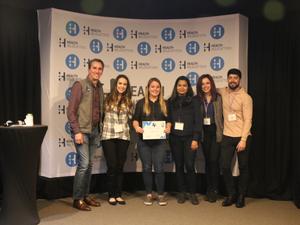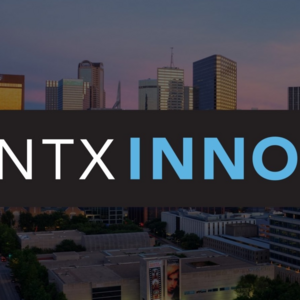
This article is part of a series looking at all the competitors of UT Dallas’ 2020 Big Idea Pitch Competition.
Lazarus 3D co-founder and Head of Biomedical Engineering Mouna Taroua says the startup’s vision is to “change the face of health care.” And to do that, the company is focusing on its organs, life-like 3D printed ones, that is.
The Houston-based biomedical device startup makes 3D-printed organs for doctors to practice surgery on before taking a knife to the real thing. Its replica organs not only match the dimensions and feel of real ones, they can also produce the effects of bleeding.
Since launching in 2014, Lazarus 3D has hit a number of milestones and garnered some recognition. In 2018, Daily Dealflow named the company its startup of the year. Last November the company was one of the winners of the Dallas leg of the SoGal Global Pitch Competition, following that up with a W at the Startup World Cup Texas Regional Competition in February. And that’s while seeing about 560 percent growth in the last four years and a total revenue of around $750,000, all without VC funding.
Amid the height of the pandemic, Lazarus 3D retooled its printers to continue making the products the doctors they served needed most: PPE. It has since deployed more than 1.5 million masks and face shields across the U.S. and Haiti.
“COVID-19 has affected everyone in so many ways, but in this time of crisis, our team really came together and we were more unified than ever before,” Taroua told NTX Inno via email. “We now know that no matter what comes our way, we are not only ready to fight it, but we will conquer it.”
Lazarus 3D is now focused on getting its printed organs into the hands of every doctor. It already counts The Cleveland Clinic and Cooper Surgical among its clients. And it’s looking for FDA approval by Q1 of 2021.
What inspired you to start your business?
Taroua: When I first met the inventors of Lazarus 3D’s technology, I quickly realized that we both shared the same vision and eagerness to change the face of healthcare. Joining Lazarus 3D’s founding team was very personal for me. My grandfather passed away as a consequence of a medical error during a surgery. Having gone through grief, knowing there ought to have been another way led me to embrace Lazarus 3D's vision and this was the ultimate reason that led me to this journey. Before joining Lazarus 3D, I was a biomedical engineering student at UTD, which gave me so many phenomenal opportunities to explore and collaborate with innovators and researchers in many areas of my interests. Particularly, I was fascinated with the anatomy of the human body and the placement of our internal structures. The human body is so meticulously engineered, it was fascinating for me. What was even more intriguing was the complexity of every organ system and how they all work in synchrony. If any one functionality is disrupted, the consequences can be so severe. My passion for anatomy led me to sketch 2D organs and even learn 3D CAD modeling tools to build accurate physical depictions digitally. At Lazarus 3D, for the first time, I was able to bring these organs to life, which was far beyond my imagination. We are so fortunate that everything we do at Lazarus 3D is directly having a positive impact on patients' lives and this is the most rewarding part for my team and me.
Personally, what impact do you hope to have through the work that you do? My goal is to change how medicine is practiced and taught, so that we can all have a safer tomorrow. I really want the old ways of training on fruits and vegetables to become a thing of the past. It is necessary for medical residents to be trained using appropriate state-of-the-art medical training models, move past the apprenticeship model and keep up with technological advances that help fortify their skills before they operate on their first patient. It is really shocking to me that we live in a time where an architect is able to show a future house in 3D and present it to their client even before construction starts, while a surgeon still struggles on a regular basis to convey the diagnosis to a brain cancer patient using black and white 2D MRI scans.
What is one of the biggest challenges you have faced so far? How did you overcome it?
I am a shy presenter. It’s the truth that I cannot deny and it has been a struggle for me to overcome my fears of public speaking. I was invited to present at the Dell Seton Medical Center at the University of Texas in Austin last year and I was so nervous. It was such a great opportunity that I really didn’t want to mess up. My team was so supportive and helped me overcome my fears by helping me and guiding me. Their biggest advice was to practice, practice, practice. I was so proud and relieved after my talk at UT Austin; proud because I had conquered one of my biggest challenges and relieved because it went smoothly.
This interview was edited for clarity and grammar.






